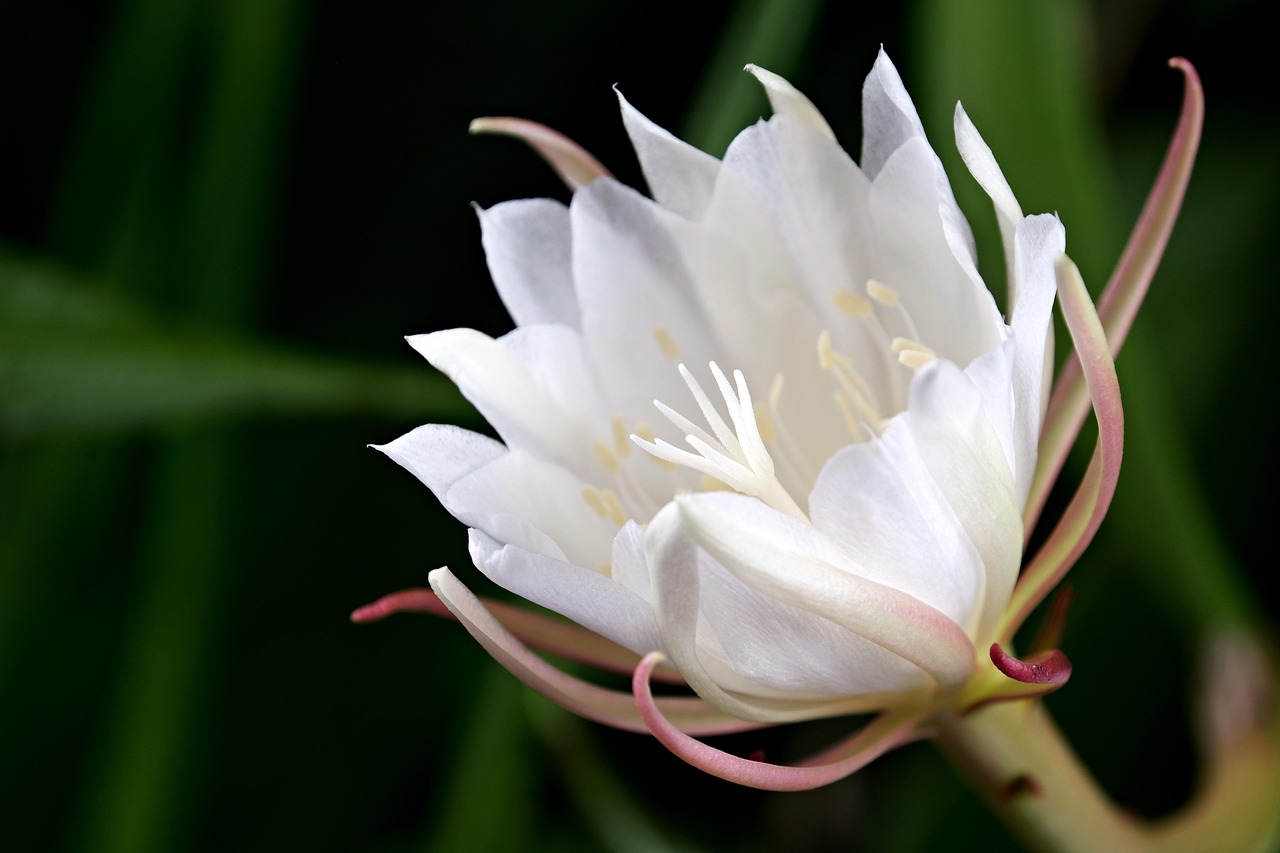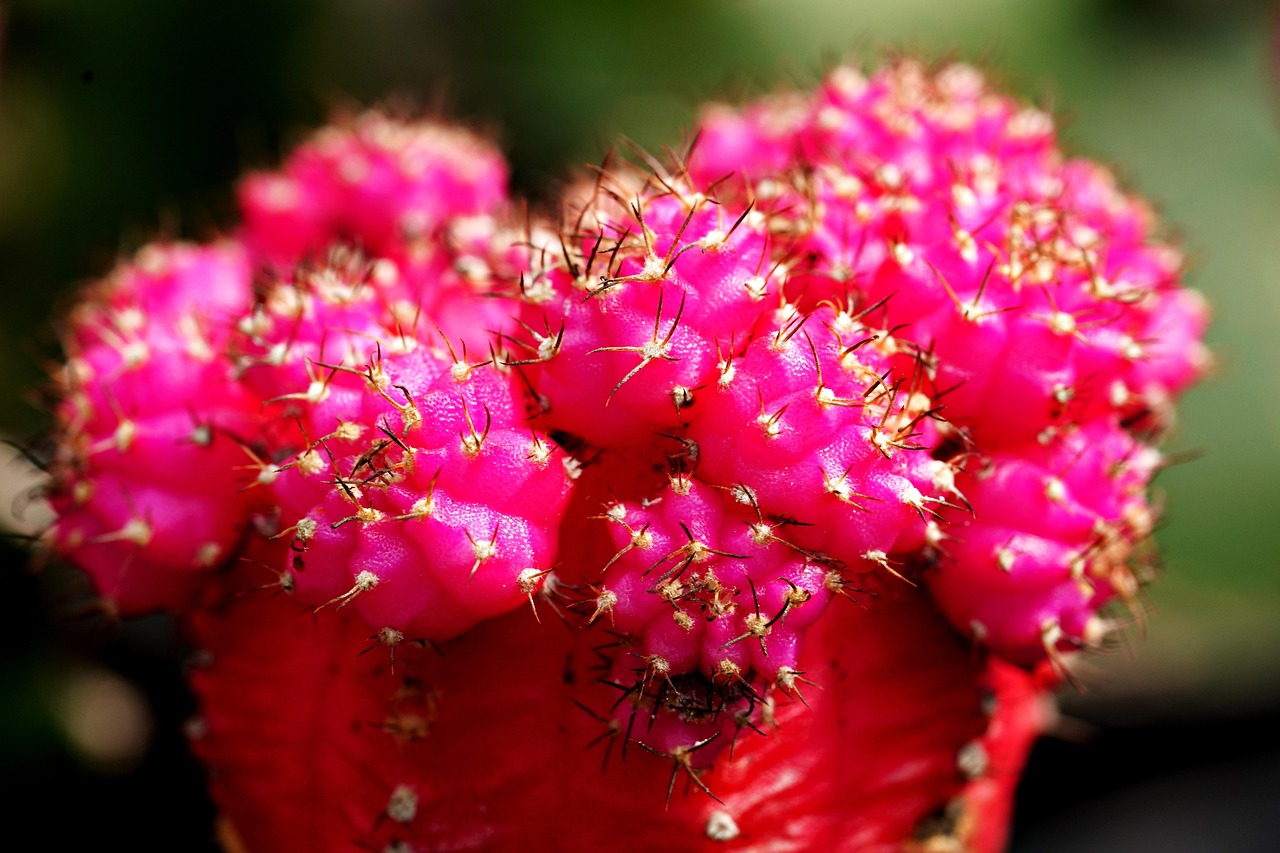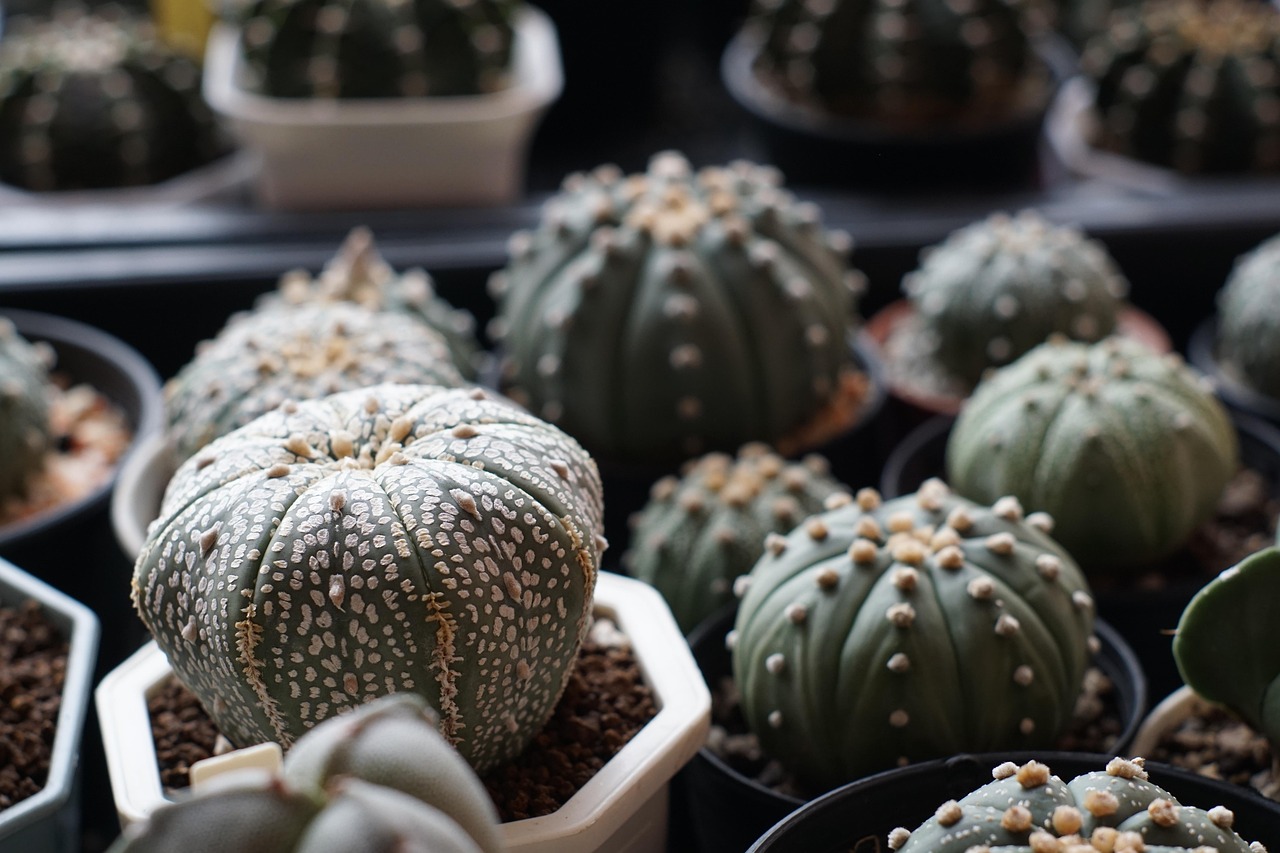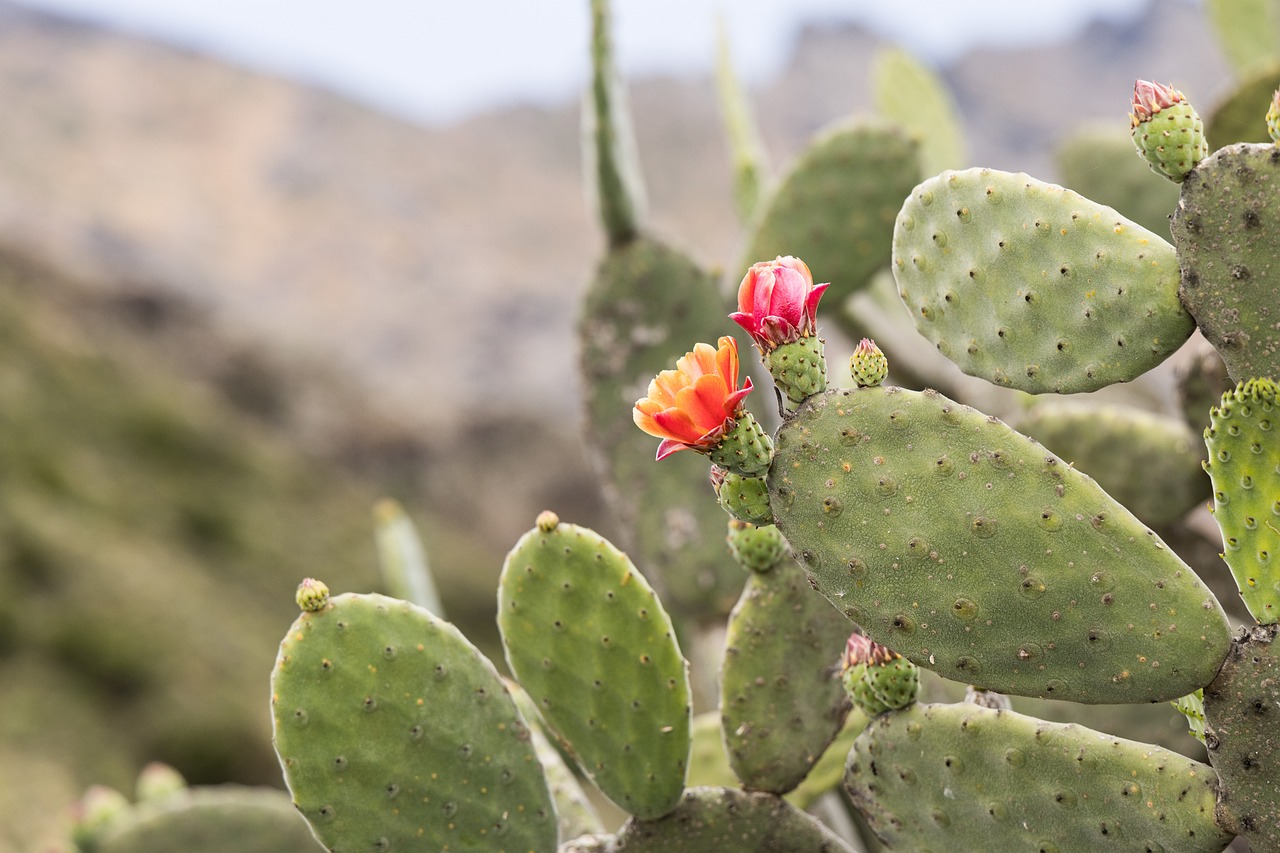Dragon Fruit: Features and Care
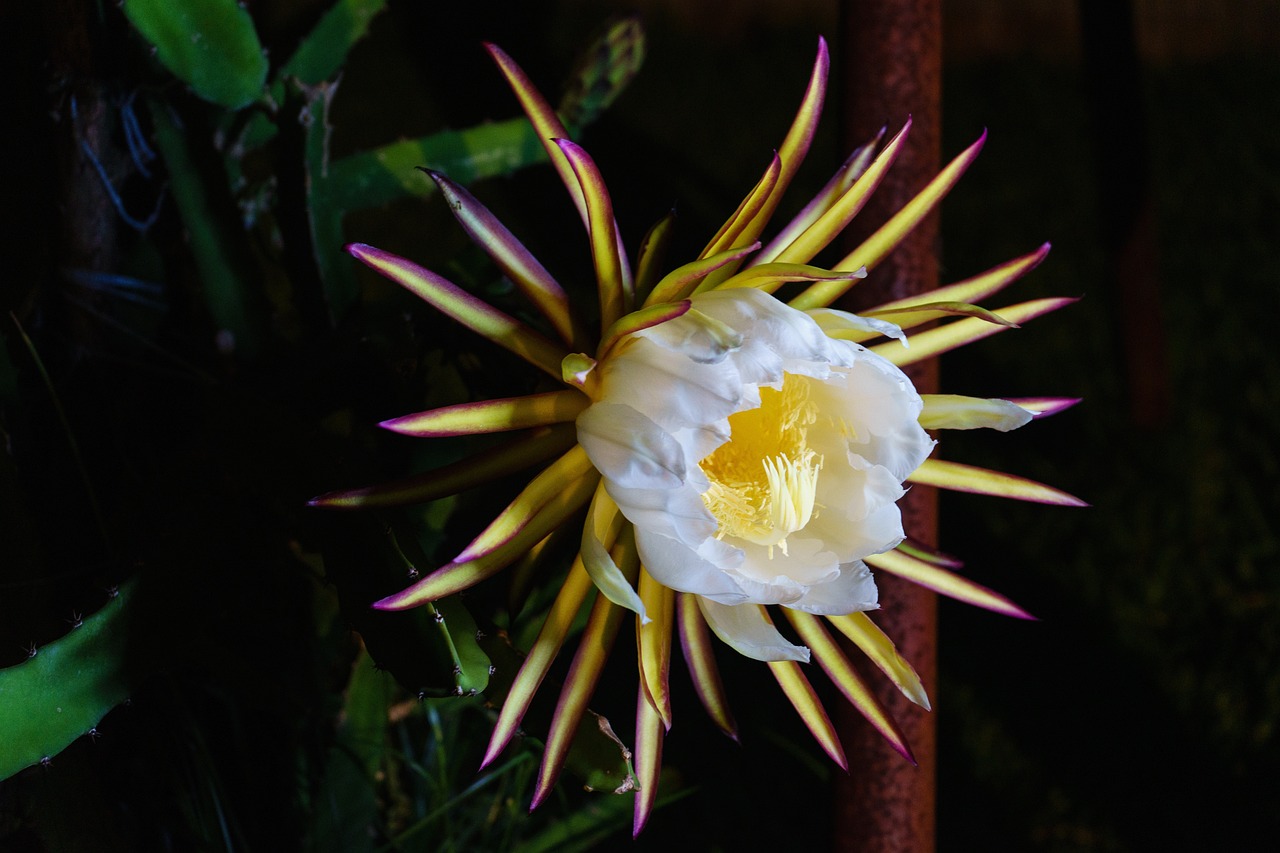
Dragon fruit is a unique plant known for its striking appearance and large white flowers that bloom at night. It is a member of the cactus family and is popular for ornamental purposes as well as for its exotic fruit.
This article provides detailed information on dragon fruit, including its basic features, cultural significance, historical background, and care tips.
Basic Information
- Scientific Name: Hylocereus undatus
- Family: Cactaceae (Cactus family)
- Origin: Central America (Mexico, Guatemala)
- Appearance:
Dragon fruit is a climbing cactus with thick, triangular stems. Its flowers, often called “moon flowers,” are large and white, blooming only at night for a brief period. After flowering, the plant produces red or yellow fruit with a distinctive appearance. - Blooming and Fruiting Season:
Dragon fruit flowers bloom from early summer to autumn, and the fruits ripen in summer and fall. Flowering typically occurs at night.
Cultural Significance of the Flower
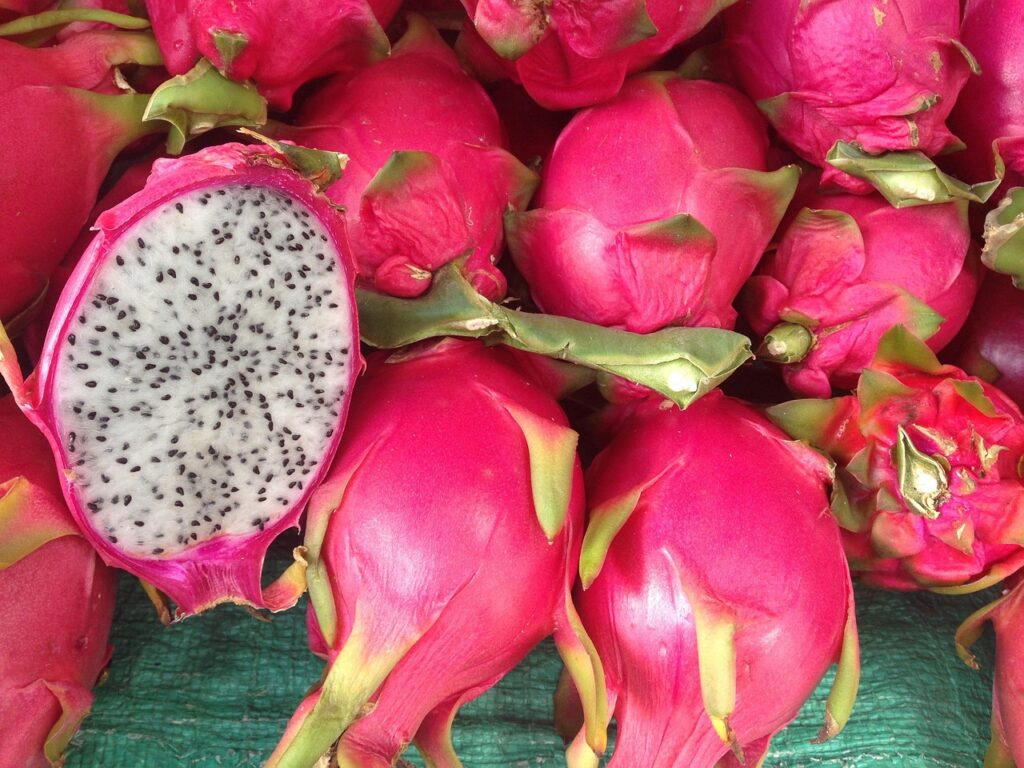
Dragon fruit flowers are considered mystical in many cultures due to their unique night-blooming nature. In Mexico, where the plant originates, ancient Mayan and Aztec civilizations regarded the flower as a “gift of the moon.”
In Southeast Asia, the flower symbolizes prosperity and abundance. It is commonly planted in home gardens and commercial spaces for its ornamental value. In China, the plant is associated with good fortune and is often used during celebratory events.
Historical Background of the Flower
The history of dragon fruit traces back to the 16th century when Spanish explorers introduced the plant to Asia, particularly Vietnam and Thailand. Over time, it became culturally significant and widely cultivated across the region.
In Europe, the term “dragon fruit” gained popularity in the 19th century due to the fruit’s scaly appearance, resembling dragon scales. Its enchanting night-blooming flowers also captivated enthusiasts, making it a prized ornamental plant in greenhouses and botanical gardens.
Gardening Tips
Dragon fruit is drought-tolerant and relatively easy to grow. Here are some care tips:
Sunlight
Prefers full sun, but in areas with intense sunlight, partial shade may be beneficial.
Watering
Water only when the soil is completely dry. Overwatering can cause root rot.
Soil
Requires well-draining sandy soil. Use commercial cactus soil or mix potting soil with sand and organic matter.
Fertilizer
Apply slow-release cactus fertilizer once or twice a month during the growing season (spring to fall).
Support Structure
Being a climbing plant, it needs a sturdy trellis or fence for support.
Winter Care
Dragon fruit is not frost-tolerant. Maintain a temperature of at least 41°F (5°C) during winter. In colder regions, grow the plant in pots for easy relocation indoors.
Conclusion
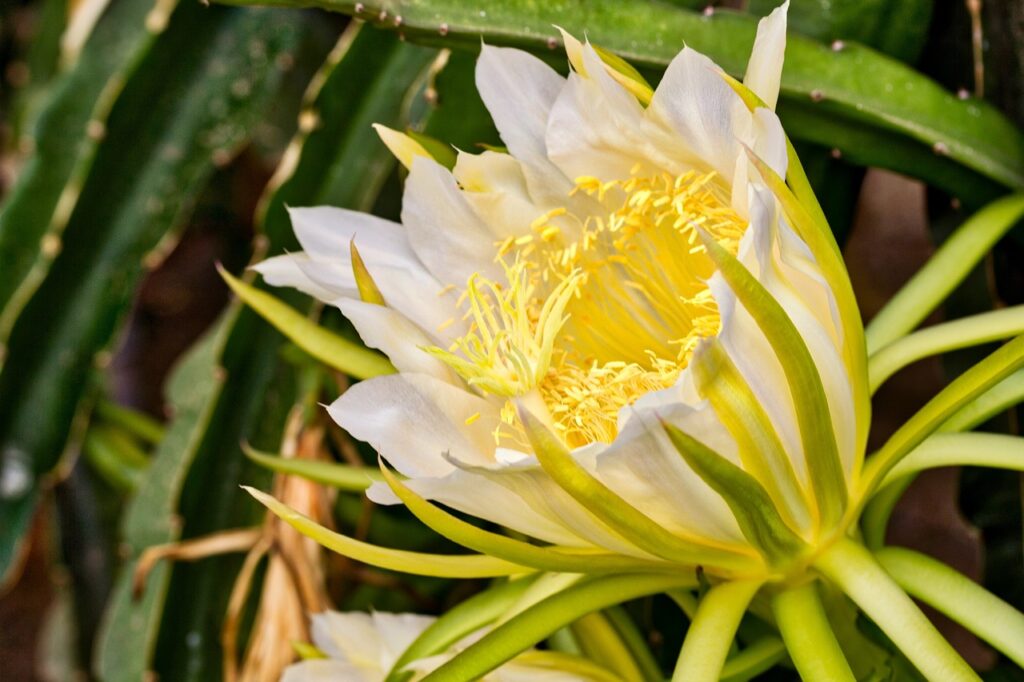
Dragon fruit captivates with its night-blooming flowers and exotic appearance. Often regarded as a symbol of mystery and prosperity in various cultures, this unique plant adds charm to any garden or balcony.
Easy to care for, it brings a touch of tropical beauty and fascination to your space.

